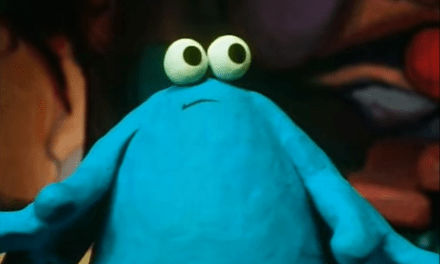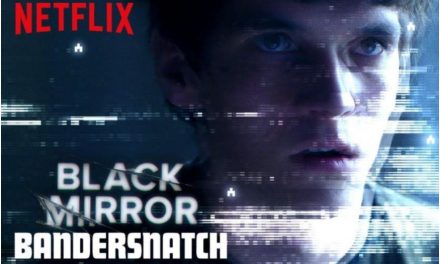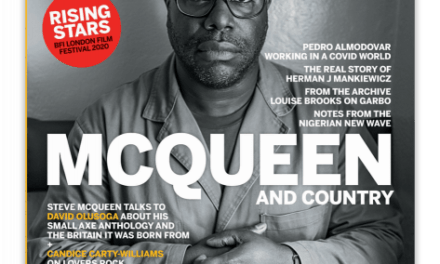cstonline.netvimeo.com/872320747
Using a distinct but, to my mind, representative episode from the series, I enjoyed drawing out the way The Last of Us engages with meanings and configurations of home. “Home,” as the first part of my video essay suggests, can constitute a safe space, sometimes a place of active retreat from danger. At the same time, a fearful retreat into one’s carefully armed stronghold – as warranted as it may be in the context of The Last of Us – quickly transforms the fort into a cage. Reflecting a wider trend established in the series, the episode features a careful negotiation of trust in order to arrive at another meaning of home – one that is ultimately shared.
During the edit, I realised I was interested in foregrounding movements in and out of bounded spaces and the reconfiguration of home/s this movement impels. The first of these movements is, of course, Bill’s emergence from the concealed basement, which served as his temporary “home” while he was hiding from the Federal Disaster Response Agency (FEDRA). His movement out of the house and onto the empty street then establishes his newly formed domain, an entirely abandoned town, soon to become highly fortified by Bill, its sole resident. The arrival – i.e. the movement from the outside in – by Bill’s future partner Frank, who also breaks down Bill’s heavily reinforced emotional barriers, is central to my video essay. In contrast, noticing Bill’s complementary movement out of a heavily safeguarded space helped me see how I wanted to end the video.
I should explain that my initial draft included clips of the episode’s second half, i.e. the half in which Bill and Frank’s romantic relationship unfolds. For obvious reasons, I was interested in showing some of the deeply affecting moments in their relationship to illustrate a sense of homecoming and homemaking. However, soon realising that what I perceived as a delicate and gradual emotional development could not be cut short in the editing suite, nor mirrored in condensed form, I opted to use only material from the episode’s first half. Partly, I wanted to draw out the fortification that so often accompanies the making and maintaining of homes.
In The Last of Us, a story told within a post-apocalyptic world besieged by zombies, raiders and the remnants of an oppressive military, the sort of home defence Bill employs throughout the episode is more logical than fanatical. Still, there is consistently something funny about Bill’s defensive preparedness as he bursts out of the front door into the newly empty street, shotgun brandished. I had initially planned to include parts of what I will call the “fortification montage” where Bill zombie-proofs his street. In the interest of brevity – an aspect of the TV dictionary format I appreciate while consistently struggling to adhere to it- I eventually omitted these scenes so that I could include Bill and Frank’s first encounter almost in its entirety.
This decision stemmed naturally from my intent to hint at a gradual development of trust between the two men without seeking to explicitly show the rest of the story. Bill and Frank’s first tentative approach towards one another foreshadows and provokes a careful reconfiguration of “home” for both men, one that is only properly established in the second half of the episode. Even as I was satisfied that Bill and Frank’s eye contact towards the end of this scene suggested if not intimacy then at least a degree of trust, ending my video essay there felt unsatisfying. Knowing that I did not want to jump ahead in the plot – for the reasons I have mentioned above – I tried to find a good moment to conclude with.
Reviewing the first minute of my second draft, I was trying to decide where to cut the clip of Bill emerging from the concealed basement. Quite suddenly, Bill’s tentative explorations of the deserted house began to take on a more metaphorical meaning. When we meet Bill, he is armed with a shotgun, moving out of his basement, the entrance to which is hidden by a cupboard. He then moves, out of the room, out of the house, out onto the empty street. While he lets his pre-set traps kill an infected person at one point in the episode, Bill will eventually move even further out, past the fence and towards Frank. Taking note of this succession of emergences, I could not resist the pun when I realised that the first of these takes Bill, quite literally, out of a closet.
In all honesty, I do not expect that my short supercut of Bill’s emergence from closets, rooms, and doors at the end of the essay is long enough to drive across the visual pun. When I thought of the idea, I was overly optimistic about the length and quantity of footage that shows Bill emerging from confined spaces. Nonetheless, I felt that representing Bill’s recognition of his own queerness through visual metaphor rather than showing Bill and Frank’s romantic relationship on-screen meant I could avoid having to summarise or decontextualise the second part of the episode, which to my mind works most impactfully when it stands alone uninterrupted.
Ending the video essay before Bill and Frank’s relationship properly begins is frustrating for me, as it may be for the viewer who is left to wonder about the nature and course of the bond between the two men. I wanted to show the home this couple makes for themselves not least because showing queer love and relationships on-screen remains as important as ever. Since I felt I couldn’t do this fictional relationship justice by showing it in a condensed way, I opted to end my video before it starts. It remains my hope that this choice makes viewers curious to see the rest of the story.
A hidden gem by Libertad Gills
cstonline.netvimeo.com/showcase/8660446/video/791360189
Niki Radman is a video essayist, occasional filmmaker and writer based in Vienna, Austria. She completed her postgraduate studies at the University of Glasgow in 2022. Her first video essay ‘eye/contact’ was included in Sight & Sound’s ‘Best video essays of 2021’.





